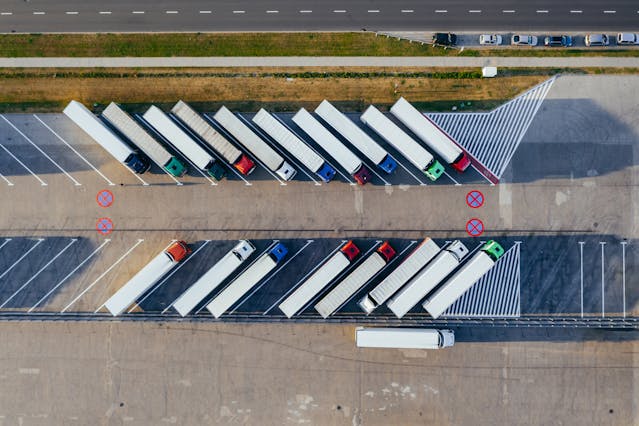Your Step-by-Step Guide to Success
Thinking about starting a freight transport business? It’s a great idea! The demand for transporting goods is always high, and there’s plenty of room to grow. But where do you begin? This article will guide you step-by-step on how to launch your own freight transport company. Ready to dive in?
I – Market Research and Preliminary Analysis
Before you start, you need to understand the market. Who needs your services? What are they transporting? Is there enough demand in your area?
1 – Research and analyze the demand
Take some time to research. Look at the local, national, and even international markets. What types of goods are being transported most often? Is there a demand for special types of transport, like refrigerated goods or hazardous materials? Knowing the answers will help you make informed decisions.
Research what your potential clients want. For example, they may want to reduce their costs or ensure they have a more sustainable supply chain.
In that case, your offer should be designed to meet their needs.
2 – Determine your niche
Do you want to transport general goods, or would you prefer to specialize? Maybe there’s a gap in the market you can fill. By focusing on a specific niche, you can offer something unique and stand out from the competition.
II – Creating a business plan

Image by fauxels from Pexels
Now that you understand the market, it’s time to create a business plan. This will be your roadmap. It outlines how your business will operate and make money.
1 – Executive summary
Start with a clear overview. What’s your vision for the company? What are your main goals? This summary should be short but powerful.
2 – Business structure
Decide on the legal structure of your company. Will you be a sole trader, or do you plan to form a partnership? Maybe a limited liability company (LLC) is more suitable. Choose what fits your situation best.
3 – Financial plan
How much will it cost to start? Think about buying or leasing vehicles, getting licenses, and paying for insurance. Don’t forget to estimate your future earnings. How long will it take to be profitable? If you need funding, where will you get it? Banks, investors, or maybe government grants?
III – Legal and administrative requirements
Setting up a business comes with legal obligations. Don’t skip this step—it’s essential.
1 – Register your business
First, you need to register your company. Choose a name that’s unique and reflects your business. Decide on your legal structure, and then file the necessary paperwork.
2 – Obtain licenses and permits
You can’t just start transporting goods without the proper licenses. Depending on where you’re located, you’ll need specific permits. Do some research or consult a legal expert to ensure you have everything covered.
3 -Get insurance
Insurance is a must. You’ll need liability insurance and coverage for your vehicles. This protects you and your clients if something goes wrong.
IV – Acquiring your fleet

Image by Marcin Jozwiak from Pexels
Your business won’t go far without vehicles. This is where a significant part of your investment will go.
1 – Choosing your vehicles
What kind of vehicles do you need? Smaller trucks for local deliveries, or larger ones for long-haul freight? Maybe a mix of both? Think about the types of goods you’ll be transporting.
2 – Fleet management and maintenance
Once you have your vehicles, you need to keep them in top shape. Regular maintenance is key. Consider investing in fleet management software. This helps you track your vehicles, schedule maintenance, and ensure everything runs smoothly.
V – Hiring and training your team
You can’t do it all alone. To run a successful freight transport business, you need a reliable team.
1 – Hiring drivers
Start by finding skilled drivers. Look for those with the right licenses and experience. Good drivers are the backbone of your business. They should know how to handle different types of cargo and navigate various routes safely.
2 – Continuous training
Even experienced drivers need training. Provide regular updates on safety practices and industry regulations. Consider offering courses on customer service, too. A well-trained driver not only ensures safe delivery but also represents your company professionally.
VI. Building your logistics infrastructure
A solid logistics system keeps your business running smoothly. It’s the heart of your operation.
1 – Transport Management Systems (TMS)
Invest in a good Transport Management System (TMS). This software is essential for planning routes, tracking shipments, and managing deliveries efficiently. For example, Oracle Transportation Management is a well-known TMS that helps businesses optimize their logistics by integrating transportation planning and execution. A robust TMS like this can save you time, reduce errors, and streamline your operations, ultimately making your business more effective and responsive to customer needs.
2 – Warehouses and distribution centers
Depending on your business model, you might need warehouses or distribution centers. These facilities allow you to store goods and manage inventory. If you plan to handle a lot of freight, having your own space could be a big advantage.
VII – Marketing strategies and client acquisition
Now that your business is set up, it’s time to attract clients. A good marketing strategy will help you stand out.
1 – Creating an online presence
Start with a professional website. Make sure it’s easy to navigate and clearly lists your services. Optimize your site for search engines (SEO) so potential customers can find you online. Don’t forget social media. Platforms like LinkedIn and Facebook are great for networking and building your brand.
2 – Developing partnerships
Reach out to other businesses. Partnering with manufacturers, distributors, or retailers can lead to steady work. Offer tailored solutions that meet their specific needs. Long-term contracts with a few big clients can provide a solid revenue base.
3 – Advertising and promotions
Consider running ads online or in industry magazines. Attend trade shows and events related to logistics and transportation. These are great places to network and showcase your business. Don’t underestimate the power of word-of-mouth, either. Satisfied clients will refer you to others.
VIII. Operational management and growth
Your business is up and running, but your work isn’t done. Now you need to manage and grow.
1 – Monitoring and performance analysis
Keep an eye on how your business is performing. Use key performance indicators (KPIs) to track things like delivery times, fuel efficiency, and customer satisfaction. Regularly review your finances to ensure you’re on the right track.
2 – Growth strategies
As your business stabilizes, think about expansion. Could you add more vehicles to your fleet? Expand into new regions? Offer additional services? Scaling up takes careful planning, but it can lead to bigger profits.
Conclusion
Starting a freight transport business is challenging, but with the right approach, it can be incredibly rewarding. You’ve learned how to research the market, create a business plan, handle legal requirements, and build a strong team. You’ve also discovered the importance of logistics, marketing, and ongoing management.
Now, it’s time to put these steps into action. With dedication and hard work, your business can thrive. Ready to hit the road? Start planning, take the first steps, and soon you’ll be on your way to running a successful freight transport company.
